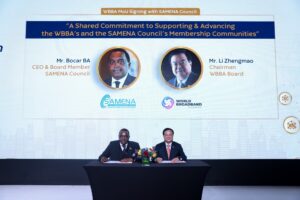The latest competitive assessment report from global technology intelligence firm ABI Research provides an in-depth examination of seven 5G end-to-end core network automation and orchestration solution vendors. The report delivers market trends, analysis, and insights based on various chosen criteria, including live deployments, ease of integration with multi-vendor solutions, support for artificial intelligence (AI) and machine learning (ML) capabilities, ongoing proof-of-concepts (POCs) and research and development (R&D) activities, security features, solution architecture, and conformance to industry standards. These innovation and implementation criteria were identified as vital for the continual growth and market acceptance of 5G Core (5GC) network automation, and orchestration solutions among communication service providers (CSPs).
“ABI Research ranked Huawei as the overall 5GC network automation and orchestration leader. Beyond offering centralized orchestration and automated Network Function (NF) lifecycle management (LCM) capabilities, Huawei offers additional value-added services such as intelligent Operations and Maintenance (O&M) capabilities with cross-layer fault identification and an intelligent Disaster Recovery (DR) solution that uses digital twin technology to help operators restore services quickly in the event of an outage. Huawei also demonstrated advanced AI/ML capabilities, with a full-stack AI/ML platform spanning all three layers of the modern telco network — the Network Equipment (NE) layer, the network, and the cloud,” explains Matthias Foo, Senior Analyst at ABI Research.
The top four overall 5GC network automation and orchestration leaders are Huawei, Ericsson, Nokia, and ZTE. Top implementation scores went to Ericsson, Huawei, and Nokia due to their strong record of commercial deployments of their solutions, ecosystem partnerships, integration support, and ability to meet carrier-grade requirements. At the same time, Huawei, Ericsson, Nokia, and ZTE also scored highly on the innovation criteria, underscored by solid solution features, integration of AI and ML capabilities, strong commitment to POCs and R&D, and overall contribution to industry standards.
“Currently, the industry is experiencing a surge in innovation in intelligent NF LCM and O&M features, as well as E2E network slicing and assurance capabilities. While the 5GC market is currently dominated by traditional incumbent Network Equipment Vendors (NEVs), it can be observed that other automation and orchestration software vendors are attempting to make in-roads into the market by offering industrial-leading automation and orchestration solutions and introducing novel cloud-native capabilities that could chip away at the incumbent NEVs leads,” concludes Jake Saunders, Vice President at ABI Research.
These findings are from ABI Research’s 5G End-to-End Core Network Automation and Orchestration competitive ranking report. This report is part of the company’s 5G & 6G Cloud-Native Systems research service, which includes research, data, and ABI Insights. Competitive Ranking reports offer a comprehensive analysis of implementation strategies, innovation, and market share analysis to offer unparalleled insight into a company’s performance and standing compared to its competitors.












